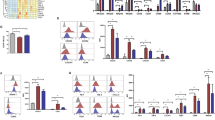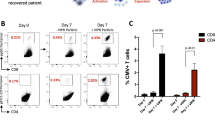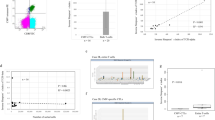Abstract
Previous studies have associated activating Killer cell Immunoglobulin-like Receptor (KIR) genes with protection from cytomegalovirus (CMV) replication after organ transplantation. Whether KIR-associated protection is operating in the context of primary infection, re-activation, or both, remains unknown. Here we correlated KIR genotype and CMV serostatus at the time of transplantation with rates of CMV viremia in 517 heart (n=57), kidney (n=223), liver (n=165) or lung (n=72) allograft recipients reported to the Swiss Transplant Cohort Study. Across the entire cohort we found B haplotypes—which in contrast to A haplotypes may contain multiple activating KIR genes—to be protective in the most immunosuppressed patients (receiving anti-thymocyte globulin induction and intensive maintenance immunosuppression) (hazard ratio after adjustment for covariates 0.46, 95% confidence interval 0.29–0.75, P=0.002). Notably, a significant protection was detected only in recipients who were CMV-seropositive at the time of transplantation (HR 0.45, 95% CI 0.26–0.77, P=0.004), but not in CMV seronegative recipients (HR 0.59, 95% CI 0.22–1.53, P=0.28). These data indicate a prominent role for KIR—and presumably natural killer (NK) cells—in the control of CMV replication in CMV seropositive organ transplant recipients treated with intense immunosuppression.
This is a preview of subscription content, access via your institution
Access options
Subscribe to this journal
Receive 6 digital issues and online access to articles
$119.00 per year
only $19.83 per issue
Buy this article
- Purchase on Springer Link
- Instant access to full article PDF
Prices may be subject to local taxes which are calculated during checkout


Similar content being viewed by others
References
Humar A, Snydman D . Cytomegalovirus in solid organ transplant recipients. Am J Transplant 2009; 9 (Suppl 4): S78–S86.
Stratta RJ, Pietrangeli C, Baillie GM . Defining the risks for cytomegalovirus infection and disease after solid organ transplantation. Pharmacotherapy 2010; 30: 144–157.
Eissens DN, Van Der Meer A, Van Cranenbroek B, Preijers FW, Joosten I . Rapamycin and MPA, but not CsA, impair human NK cell cytotoxicity due to differential effects on NK cell phenotype. Am J Transplant 2010; 10: 1981–1990.
Wai LE, Fujiki M, Takeda S, Martinez OM, Krams SM . Rapamycin, but not cyclosporine or FK506, alters natural killer cell function. Transplantation 2008; 85: 145–149.
Chen C, Busson M, Rocha V, Appert ML, Lepage V, Dulphy N et al. Activating KIR genes are associated with CMV reactivation and survival after non-T-cell depleted HLA-identical sibling bone marrow transplantation for malignant disorders. Bone Marrow Transplant 2006; 38: 437–444.
Cook M, Briggs D, Craddock C, Mahendra P, Milligan D, Fegan C et al. Donor KIR genotype has a major influence on the rate of cytomegalovirus reactivation following T-cell replete stem cell transplantation. Blood 2006; 107: 1230–1232.
Hadaya K, de Rham C, Bandelier C, Bandelier C, Ferrari-Lacraz S, Jendly S et al. Natural killer cell receptor repertoire and their ligands, and the risk of CMV infection after kidney transplantation. Am J Transplant 2008; 8: 2674–2683.
Sobecks RM, Askar M, Thomas D, Rybicki L, Kalaycio M, Dean R et al. Cytomegalovirus reactivation after matched sibling donor reduced-intensity conditioning allogeneic hematopoietic stem cell transplant correlates with donor killer immunoglobulin-like receptor genotype. Exp Clin Transplant 2011; 9: 7–13.
Stern M, Elsasser H, Honger G, Steiger J, Schaub S, Hess C . The number of activating KIR genes inversely correlates with the rate of CMV infection/reactivation in kidney transplant recipients. Am J Transplant 2008; 8: 1312–1317.
Stern M, Hadaya K, Honger G, Martin PY, Steiger J, Hess C et al. Telomeric rather than centromeric activating KIR genes protect from cytomegalovirus infection after kidney transplantation. Am J Transplant 2011; 11: 1302–1307.
Zaia JA, Sun JY, Gallez-Hawkins GM, Thao L, Oki A, Lacey SF et al. The effect of single and combined activating killer immunoglobulin-like receptor genotypes on cytomegalovirus infection and immunity after hematopoietic cell transplantation. Biol Blood Marrow Transplant 2009; 15: 315–325.
van Duin D, Avery RK, Hemachandra S, Yen-Lieberman B, Zhang A, Jain A et al. KIR and HLA interactions are associated with control of primary CMV infection in solid organ transplant recipients. Am J Transplant 2014; 14: 156–162.
Rajalingam R . Overview of the killer cell immunoglobulin-like receptor system. Methods Mol Biol 2012; 882: 391–414.
Graef T, Moesta AK, Norman PJ, Abi-Rached L, Vago L, Older Aguilar AM et al. KIR2DS4 is a product of gene conversion with KIR3DL2 that introduced specificity for HLA-A*11 while diminishing avidity for HLA-C. J Exp Med 2009; 206: 2557–2572.
Moesta AK, Graef T, Abi-Rached L, Older Aguilar AM, Guethlein LA, Parham P . Humans differ from other hominids in lacking an activating NK cell receptor that recognizes the C1 epitope of MHC class I. J Immunol 2010; 185: 4233–4237.
Sun JC, Beilke JN, Lanier LL . Adaptive immune features of natural killer cells. Nature 2009; 457: 557–561.
Charoudeh HN, Terszowski G, Czaja K, Gonzalez A, Schmitter K, Stern M . Modulation of the natural killer cell KIR repertoire by cytomegalovirus infection. Eur J Immunol 2013; 43: 480–487.
Guma M, Angulo A, Vilches C, Gomez-Lozano N, Malats N, Lopez-Botet M . Imprint of human cytomegalovirus infection on the NK cell receptor repertoire. Blood 2004; 104: 3664–3671.
Beziat V, Liu LL, Malmberg JA, Ivarsson MA, Sohlberg E, Bjorklund AT et al. NK cell responses to cytomegalovirus infection lead to stable imprints in the human KIR repertoire and involve activating KIRs. Blood 2013; 121: 2678–2688.
Malmberg KJ, Beziat V, Ljunggren HG . Spotlight on NKG2C and the human NK-cell response to CMV infection. Eur J Immunol 2012; 42: 3141–3145.
Foley B, Cooley S, Verneris MR, Curtsinger J, Luo X, Waller EK et al. Human cytomegalovirus (CMV)-induced memory-like NKG2C+ NK cells are transplantable and expand in vivo in response to recipient CMV antigen. J Immunol 2012; 189: 5082–5088.
Koller MT, van Delden C, Muller NJ, Baumann P, Lovis C, Marti HP et al. Design and methodology of the Swiss Transplant Cohort Study (STCS): a comprehensive prospective nationwide long-term follow-up cohort. Eur J Epidemiol 2013; 28: 347–355.
Gonzalez-Galarza FF, Christmas S, Middleton D, Jones AR . Allele frequency net: a database and online repository for immune gene frequencies in worldwide populations. Nucleic Acids Res 2011; 39 (Database issue): D913–D919.
Manuel O, Kralidis G, Mueller NJ, Hirsch HH, Garzoni C, van Delden C et al. Impact of antiviral preventive strategies on the incidence and outcomes of cytomegalovirus disease in solid organ transplant recipients. Am J Transplant 2013; 13: 2402–2410.
Uhrberg M, Valiante NM, Shum BP, Shilling HG, Lienert-Weidenbach K, Corliss B et al. Human diversity in killer cell inhibitory receptor genes. Immunity 1997; 7: 753–763.
Cooley S, Weisdorf DJ, Guethlein LA, Klein JP, Wang T, Le CT et al. Donor selection for natural killer cell receptor genes leads to superior survival after unrelated transplantation for acute myelogenous leukemia. Blood 2010; 116: 2411–2419.
Acknowledgements
The Swiss Transplant Cohort Study is funded by a grant from the Swiss National Science Foundation (3347CO-108795). This work was supported by the Swiss National Science Foundation (PP00P3_128461/1 to MS, and 31003A_135677/1 to CH). This work was supported by the Freiwillige Akademische Gesellschaft, Basel.
Author information
Authors and Affiliations
Consortia
Corresponding author
Ethics declarations
Competing interests
The authors declare no conflict of interest.
Additional information
Supplementary Information accompanies this paper on Genes and Immunity website
Supplementary information
Rights and permissions
About this article
Cite this article
Gonzalez, A., Schmitter, K., Hirsch, H. et al. KIR-associated protection from CMV replication requires pre-existing immunity: a prospective study in solid organ transplant recipients. Genes Immun 15, 495–499 (2014). https://doi.org/10.1038/gene.2014.39
Received:
Revised:
Accepted:
Published:
Issue Date:
DOI: https://doi.org/10.1038/gene.2014.39
This article is cited by
-
The impact of HLA polymorphism on herpesvirus infection and disease
Immunogenetics (2023)
-
Evaluation of telomeric KIR genes and their association with CMV infection in kidney transplant recipients
Immunogenetics (2022)
-
Challenges and Clinical Implications of the Diagnosis of Cytomegalovirus Lung Infection in Children
Current Infectious Disease Reports (2019)
-
The Swiss Transplant Cohort Study: Lessons from the First 6 Years
Current Infectious Disease Reports (2015)



